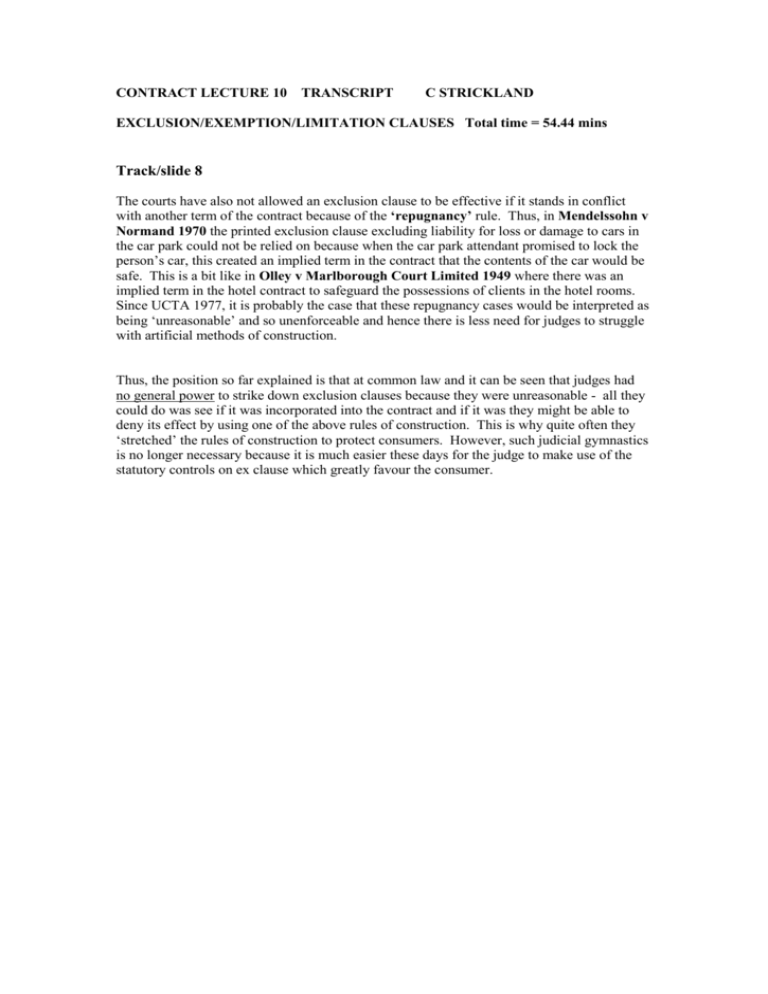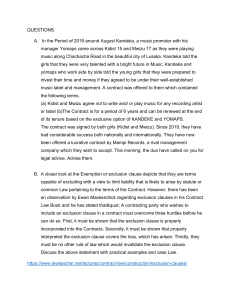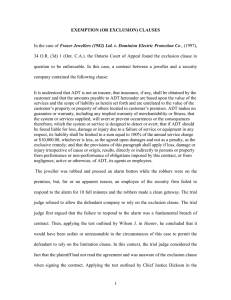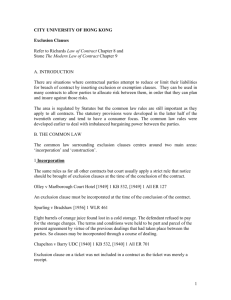Transcript of this slide
advertisement

CONTRACT LECTURE 10 TRANSCRIPT C STRICKLAND EXCLUSION/EXEMPTION/LIMITATION CLAUSES Total time = 54.44 mins Track/slide 8 The courts have also not allowed an exclusion clause to be effective if it stands in conflict with another term of the contract because of the ‘repugnancy’ rule. Thus, in Mendelssohn v Normand 1970 the printed exclusion clause excluding liability for loss or damage to cars in the car park could not be relied on because when the car park attendant promised to lock the person’s car, this created an implied term in the contract that the contents of the car would be safe. This is a bit like in Olley v Marlborough Court Limited 1949 where there was an implied term in the hotel contract to safeguard the possessions of clients in the hotel rooms. Since UCTA 1977, it is probably the case that these repugnancy cases would be interpreted as being ‘unreasonable’ and so unenforceable and hence there is less need for judges to struggle with artificial methods of construction. Thus, the position so far explained is that at common law and it can be seen that judges had no general power to strike down exclusion clauses because they were unreasonable - all they could do was see if it was incorporated into the contract and if it was they might be able to deny its effect by using one of the above rules of construction. This is why quite often they ‘stretched’ the rules of construction to protect consumers. However, such judicial gymnastics is no longer necessary because it is much easier these days for the judge to make use of the statutory controls on ex clause which greatly favour the consumer.











